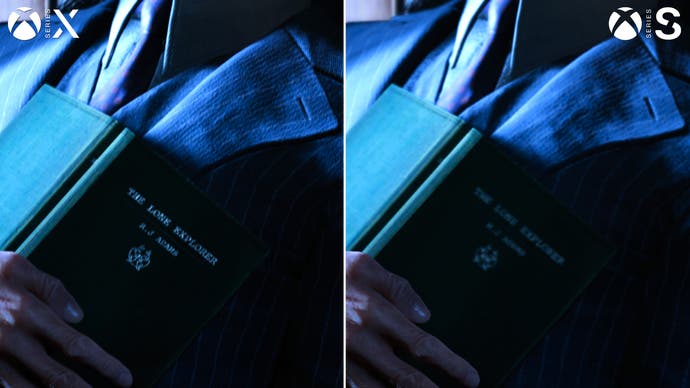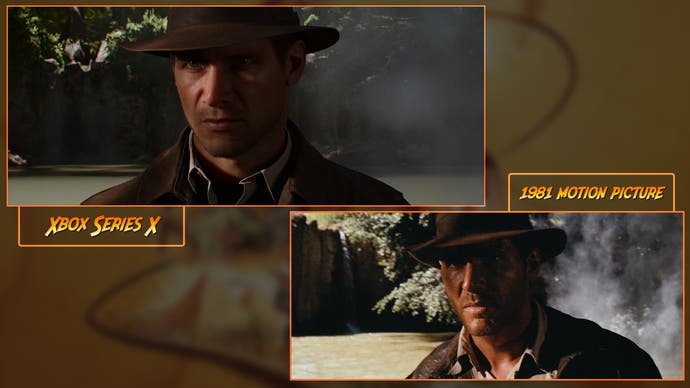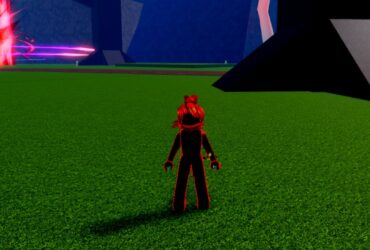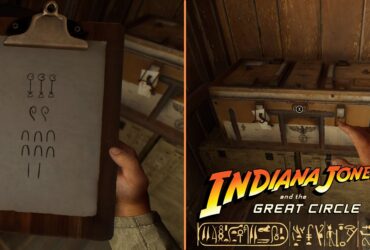Indiana Jones and the Great Circle marks the triumphant return of Machine Games. This is the studio’s largest game to date and the first to deviate from the Wolfenstein series on which its reputation was built. It also gives us our first look at the latest tech developed in tandem between id Software and Machine Games – and while it boasts its very own label, this new technology looks to right the many wrongs we’ve come to expect with many AAA releases powered by Unreal Engine 5, including support for ray traced global illumination (RTGI) while targeting 60fps at high resolutions. Today we’ll run through some of the great visual features on offer, both from a technology and artistic standpoint, while covering off the nuts and bolts of performance and image quality and the gameplay itself. Let’s swing into adventure.
With its release in the summer of ’81, Indiana Jones as a franchise grew up alongside video games as a medium. With Harrison Ford so successfully bringing this dashing character to life, Indy’s success would spawn countless offshoots and adjacent products including video games – the first of which arrived just one year after the film’s release on the Atari 2600. Raiders of the Lost Ark, as rough and confusing as it may be, would be one of many video games that would attempt to recreate iconic moments from the very first film.
That brings us to the modern era. The Great Circle is an original story, but it opens in a familiar way. The introduction from Raiders has been meticulously recreated for this new game and it feels like a statement of intent – as if the designers at Machine Games studied this sequence – frame by frame to fully comprehend the way Steven Spielberg told the story. By duplicating it, the team has come to grips with how best to tell a story in this world. It also allows us to compare the game directly to the film which, in turn, reveals some of the game’s visual wins.
First and foremost, unlike prior Machine Games titles, all cutscenes featured in this game are rendered in real-time, which is a positive step. This also demonstrates that character models are largely excellent, better than I expected pre-launch. There is a surprising amount of detail visible and while there is a bit of an uncanny valley element to these scenes, I feel like the team has largely captured the look of the actors. Alfred Molina’s portrayal of Satipo during this sequence feels surprisingly authentic, with his over-the-top facial expressions and persistent level of bewilderment as Indy goes about his business. The animation, expressions and recreation of iconic camera angles is all beautifully handled during the game’s introduction.
But before we continue, there is one issue I wanted to flag – you’ll notice stutters and occasional drops to 30fps. There are large frame-time anomalies but that’s only half the answer – certain animations also drop to 30fps for a short time as well, even though the surrounding scene updates at 60 fps. The issue here is that it does detract a bit from the otherwise amazing cutscenes, and it’s something I hope they can fix.
Speaking of camera work, The Great Circle offers users two aspect ratio options: a full 16:9 option, the default, and a ultra-wide cinematic option. Using the cinematic option gives you a wider aspect ratio that more closely matches the film – the 16:9 option crops the left and right of each shot.
To see this content please enable targeting cookies. Manage cookie settings
I also wanted to highlight the quality of the voice work – Troy Baker steps into the role of Indiana Jones and, listening to them side by side, I was kinda floored by how closely it resembles young Harrison Ford. Of course, it’s not just Indy. The entire cast is brilliant and, like prior Machine Games titles, original languages are often included. Sections in a European city feature that area’s language, while the villain speaks German and accented English – and his performance is honestly striking.
As the game moves to an interior shot in a temple, the game’s recreation of the film remains impressive, from the expressions shared between Indy and Satipo to the hair rendering on Indy’s unfortunate competitor. It’s clear that Machine Games has taken great care with rendering strands of hair in a clean and realistic manner, bringing their characters to life. This doesn’t seem to be a strand-type hair system, they’re still traditional hair cards, but the results are still excellent.
The game’s RTGI also impresses, with ray tracing is used to calculate indirect lighting from light sources like the sun. Interior spaces with a view to the outdoors best demonstrate the strengths of the technique, with natural light fall-off, contact shadows and shadowed crevices. It’s a marked leap from previous games based on id Tech, and I think it’s critical for a game like this which takes place in so many natural locales. You want that natural lighting to really bring each scene to life.



Despite the cost of RTGI, The Great Circle still targets 60fps – an impressive feat, especially onsidering the high average resolution. On Xbox Series X, the game’s internal resolution is around 1800p on average, with dynamic resolution scaling in use and clean overall image quality. It’s a huge leap over the string of UE5 titles we’ve seen with sub-1080p resolution when RT is enabled at 60fps.
Xbox Series S is even more of a challenging platform, and one where we’ve seen RT features dropped on many releases. Here though, RTGI is a requirement, so Machine Games needed to take a different approach to ensure a good visual outcome. Internal resolutions are still relatively high, at around 1080p, but the game relies on variable rate shading (VRS), like Doom Eternal did on Xbox. This technique attempts to reduce quality in areas not of visual interest, which drives up performance but can sometimes manifest like video encoding artefacts. The issue isn’t serious on Series X, but on Series S the combination with the lower resolution and TAA can produe a smeary mess that doesn’t hold up well on a large display – though probably would be fine enough on a smaller handheld screen.
The game’s asset quality has also been reduced, with lower-res textures contributing to an 87GB install size versus 130GB on Series X. RT quality is also reducced, with less precision overall that opens the door to light leak and other artefacts or changes. Still, while it’s clear that the visuals take a hit on Series S, I would say they’ve done a better job than usual creating a version of the game that still plays well and looks OK enough.


Beyond the more linear opening, most of the game takes place in huge open-ended maps. This isn’t an open world game by any means, but the levels are still larger than what we’ve seen from Machine Games in the past – something more like a large Hitman map, with realistically spaced points of interest.
Thankfully, the frame-rate is virtually unwavering at 60fps during actual gameplay on both Series X and Series S. Combining large levels, RTGI and a 60fps update rate is no mean feat! Loading times are also amazingly quick – there’s virtually zero visible loading in the game at all, making it feel completely seamless. The only minor issue in performance terms are the cutscene issues mentioned earlier, meaning that the game is otherwise perfect on console.
Beyond that, I think this is one of the best licensed games I’ve ever played. It’s rare that a developer so perfectly understands the source material on which it is building a game, but it feels like the folks behind Indy truly love and respect the property. The storytelling is, quite frankly, significantly better than the last two films, and it’s much more grounded too. There are supernatural elements, but it’s very much kept within the realm of something like Raiders.




The basic structure of the game allows this to work – essentially, you’ll spend time in various locations around the globe, where you’ll face a mix of puzzle-solving, dialog, exploration, stealth and combat. The way the game smoothly transitions between linear scripted sequences and wide-open gameplay really gives it room to breathe. There are even fun side missions – like one where you steal a black shirt in order to gain entry to an underground boxing arena. It’s a game that shares a lot of DNA with the first Riddick title, Escape from Butcher Bay, which some of the staff at Machine Games had worked on previously.
Things like the stealth system are also very interesting once you get into it. Basically, Indy can’t discreetly take out foes with just his hands – that initiates a fist fight. Instead, players will need to use objects scattered around the environment for a quick and stealthy knock-out. Enemies react realistically to Indy’s attacks and the stealth AI works as you’d expect – even if it’s a bit ‘gamey’, with enemies happy to go about their business even as their ranks thin dramatically. Still, it’s all about rewarding experimentation, allowing players to fumble around while taking down foes along the way. Guns are rarely used too, especially early on, but they are always an option if you can handle the consequences. Fire off a few rounds in an enemy base, for instance, and you’ll alert everyone.
The big takeaway for me here is that, after spending so much time with the game, it really hit home just how much I had wanted such a game to exist in the first place. Indiana Jones and the Fate of Atlantis is one of the first video games I ever purchased with my own money and I cherished it. I enjoy other Indy games as well, but The Great Circle honestly outdoes every one of them – it truly channels the spirit of Indiana Jones in game form and it’s well worth your time.
function appendFacebookPixels() { if (window.facebookPixelsDone) return; !function(f,b,e,v,n,t,s) {if(f.fbq)return;n=f.fbq=function(){n.callMethod? n.callMethod.apply(n,arguments):n.queue.push(arguments)}; if(!f._fbq)f._fbq=n;n.push=n;n.loaded=!0;n.version='2.0'; n.queue=[];t=b.createElement(e);t.async=!0; t.src=v;s=b.getElementsByTagName(e)[0]; s.parentNode.insertBefore(t,s)}(window, document,'script', 'https://connect.facebook.net/en_US/fbevents.js');
fbq('init', '560747571485047');
fbq('track', 'PageView'); window.facebookPixelsDone = true;
window.dispatchEvent(new Event('BrockmanFacebookPixelsEnabled')); }
window.addEventListener('BrockmanTargetingCookiesAllowed', appendFacebookPixels);
Source link











Leave a Reply